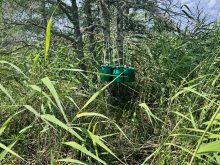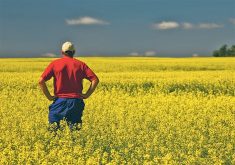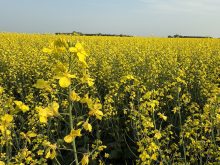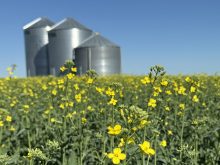Widespread heavy rain late last week expected to help some and hinder others as a major system hit western Prairies
REGINA — June threw a little bit of everything at Prairie crops except for the heat they need to advance.
Rain continued to fall last week in regions that have already had enough and others that still need more. On June 28, heavy rains were reported through central Alberta and Saskatchewan agricultural areas, flooding social media with pictures of rain gauges containing as much as 125 millimetres and crops under water.
In June, farmers saw unseeded acres due to moisture, touches of frost into the third week of the month, dry pockets, strong winds and, for places like Estevan, Sask., hail the size of baseballs.
Read Also

VIDEO: Bittersweet harvest for this family farmhand
Bruce Burnett helps his brother harvest wheat and canola for the last time on the family farm in Manitoba where they both grew up.
The cool wet weather has helped suppress grasshopper populations in many areas, but Richardson’s ground squirrels are abundant.
Scott Anderson of Briercrest, Sask., was reseeding canola last week because of the rodents.
“We can’t stay ahead of them,” he said from the tractor.
“The population has just exploded.”
He said it is late to be reseeding canola, but he wants something on that land.
He and his neighbours are at their wits’ end with gophers, he said. They are using the available control products and shooting them. Anderson has even parked his vehicle and sent exhaust fumes down their burrow holes through a tube while he is placing poison.
“It’s been bad, but I’ve never lost a crop like this to gophers. It’s always been grasshoppers, and this year I haven’t seen any hoppers yet,” he said.
Those battles are coupled with a June 23 hailstorm that hit his mustard, canola, lentils and durum. He expects the crops will recover, although he is unsure about the mustard.
The hail wasn’t large — just bigger than pea-size — but it lasted 15 minutes.
“I’ve never had hail like that before and I’ve been farming 29 years,” Anderson said.
“It wasn’t a real wide strip, but probably half our land had a little bit of hail on it.”
The mustard was just starting to flower and he said it’s “heartbreaking” to lose a beautiful crop.
Gophers are also a problem in Alberta, where Leroy Newman farms near Blackie. He said he is hearing a lot of complaints about them.
There hasn’t been much hail in his area, but he said he expects that will happen at some point.
“I’ve been hailed lots in my life, 25 times out of 30 years,” he said.
Three of those were 100 per cent damage.
However, he said sometimes the moisture that comes with hail is a blessing.
Newman was anticipating a good rain late last week in a forecasted weather system. Crops got off to a reasonable start, but it’s dry now and rain is needed.
“We’re not good. We’re hanging on,” he said.
“I’m digging a trench here and the moisture is only down two feet. We’re working on timely rains now. It’s been a really windy year, more wind than normal.”
Manitoba’s pulse crop specialist said wind has been a big factor for crops in that province.
Dennis Lange said it takes a while to establish good ground cover for soybeans and dry beans. In lighter soils and with the lack of heat, the plants are growing slower than usual.
“Over the last two to three weeks, different areas have had some pretty strong winds that have beat up the plants,” he said.
Heat will help the plants recover and grow. It will also help the corn crop.
“The cereals are generally looking pretty good, soybeans and dry beans are a little slower just because of the cooler temperatures,” Lange said.
Field peas are also looking good.
The main issue in Manitoba this year has been the wet conditions. Some areas are reporting 200 per cent of normal rainfall.
“I think the biggest thing now getting into July is we’re going to need some warmer weather just to bring the crops along,” Lange said.
There has been some hail, but no reports of gophers or disease causing problems.
Saskatchewan crops extension specialist Meghan Rosso said the delayed crop development actually helps if there is hail because the plants recover more easily.
There are acres in the northeast that will go unseeded due to moisture, and some farmers have reported crops drowned out in the east-central region, she said.
Canola Council of Canada agronomist Jason Casselman, who works in the Peace region of Alberta and British Columbia, said some areas saw temperatures drop as low as -2 and -3 C, but there are no indications the damage was enough to require reseeding.
Conditions in the Peace are better than last year, but he said the region south of the Peace River and the County of Grande Prairie were still seeing low to moderate moisture. Northeast of the river, conditions are the wettest in 50 years when comparing 30-day accumulated precipitation to the long-term normal.
The Canadian Crop Hail Association reported more than 900 claims from storms between May 23 and June 17.


















